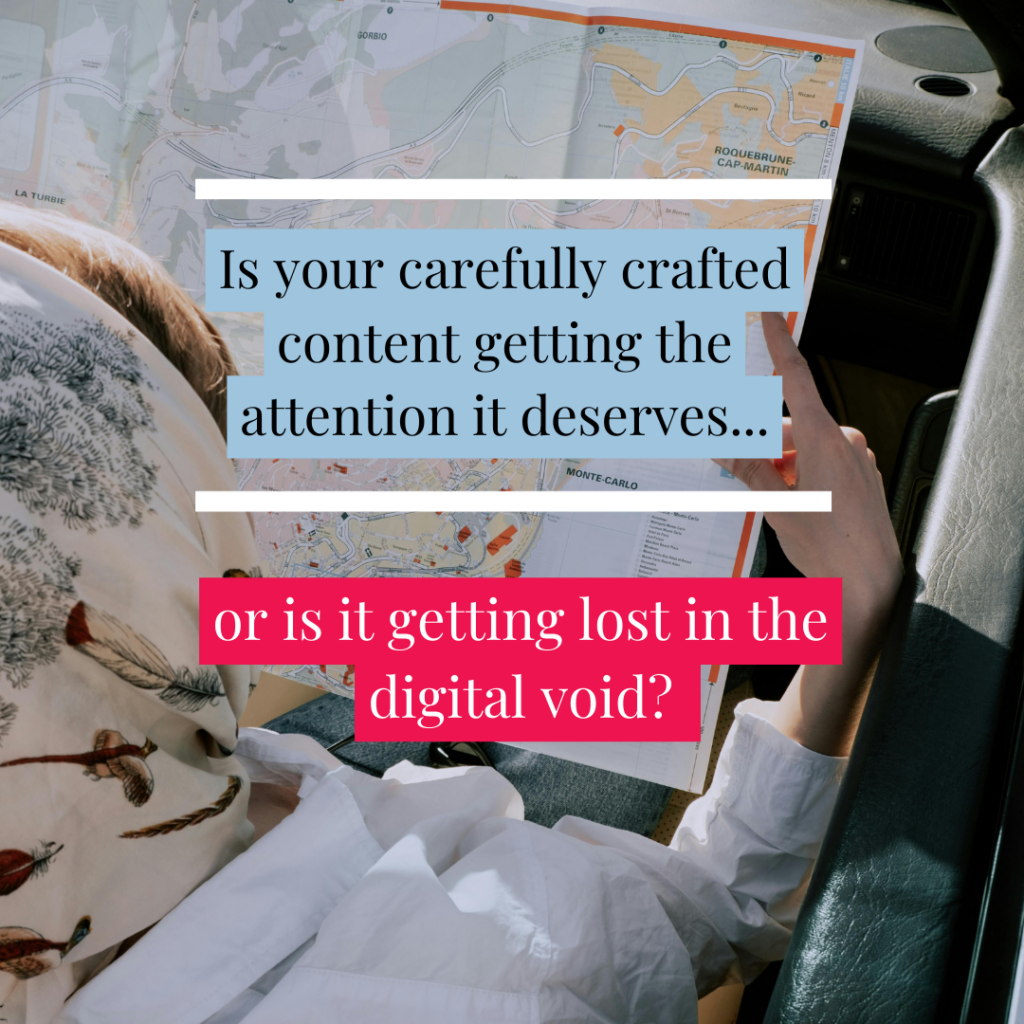The importance of the user journey in your content strategy
Are people seeing your content, or is it living in a vacuum? The user journey is as important as the content itself. From information architecture to in-content pathways, here’s how to make sure your content gets seen.
SIGN UP FOR OUR NEWSLETTER
We’ve all heard the saying: “If a tree falls in the forest and no one’s around to hear it, does it make a sound?”
I think there’s something similar to be said of, oh, most of the content on the world wide web, which, at the time of writing, encompasses some 1.5 billion websites and many, many more website pages.
I’d venture a guess that most of these pages are never seen by anyone.
And that’s not necessarily because they don’t contain quality content, but because they’re just so damn hard to find. It’s the cold, hard truth that not every one of these billions of pages can be ranked first or fifteenth or even fiftieth on Google.
Now, if your potential customers do find their way to your website through one of the pages that does rank, you don’t want them to leave once you’ve got them there, do you? No, you want them to hang around and make themselves comfortable, to read another blog, to explore what products you have on offer, to make an inquiry, to download your white paper, or subscribe to your newsletter. But if the next action you want them to take isn’t clear, or your website’s navigation doesn’t make it easy for them to choose their own adventure, they’re going to up and leave.
There’s absolutely no point in creating content that nobody ever sees, or does anything with. That’s why for every single piece of content you create, you also need to consider what you want your visitors to do next and how that piece of content fits into your website as a whole. The user journey – that is, the experience a person has when they visit your website, where they go, and what they do – matters as much as the content itself, and should be an integral part of your content strategy. Because if you’re creating content that no one ever sees, does it really exist?
How to figure out if your content is living in a vacuum
You probably have a gut instinct on this one. If you have a hard time navigating your business’s website, and are constantly struggling to find the page you want to reference, it’s likely your users aren’t finding their way around either.
I’m willing to bet there are some pages on your website that have never had any visitors. Go on, take a look at your Google Analytics now. But – like I said before – I very much doubt that’s because the content on those pages isn’t any good (if you didn’t care about quality content, you wouldn’t be reading this after all). In all likelihood it’s because, beyond SEO, you (or whoever published them) didn’t really think about how anyone would find them.
But you should always validate your gut instinct with some hard data. Bounce rates, entry rates, and exit rates are a good place to start.
Bounce rates
Bounce rates provide a good indication of whether or not your visitors are sticking around. A bounce rate shows the percentage of people that visit a page and jump right off again. It should be noted that a bounce rate doesn’t necessarily mean your visitors haven’t looked at what’s on the page – a common misconception – they just haven’t done anything else. But if there’s absolutely anything on the page you want your visitors to click on, a high bounce rate will show you that they ain’t doing it, and there’s something you need to fix.
Entry rates
Think of your website like your local Westfield, with multiple entrances and exits. Essentially, the entry rate measures which entrance (or webpage) is the most popular starting point for visitors. If a particular entrance (say, the one by Mecca) is getting a lot of traffic, it means a lot of people are starting their mall visit there, just like visitors starting their journey on a specific page of a website. So, entry rates give us insights into where visitors are coming from or what initially attracts them to your site.
Exit rates
Exit rates, on the other hand, indicate which exit (or webpage) they leave your website from. If a page has a low exit rate, it means visitors didn’t leave your website from there, they went on to look at something else. But high exit rates can highlight potential problem areas where content might not be engaging enough to keep visitors exploring – or where the user journey might be breaking down.
A blueprint for website usability
So, how do you make your website a place people want to hang around? Here are a few things for you to consider.
Information architecture
What is information architecture? It’s how you structure and organise the content on your website. A well-designed information architecture makes it easy for visitors to find their way around. Not sure whether your information architecture is up to scratch? Here are a few questions to ask:
-
Do you have a clear menu and main navigation?
-
Is your content clearly grouped and labeled or tagged?
-
Does your website have a logical hierarchy?
-
Do you have a search function?
-
Are you making use of breadcrumbs?
Sometimes, this might involve making some small tweaks to your current website – adding a couple of extra labels to your main navigation, for example, updating your footer with a simplified site map, or optimising the way you use content tags. In some cases, however, this might require a total overhaul – in which case you’ll likely need to make a case for change.
In-content pathways
You can also build better pathways between your content through the content itself, which can also be an interim solution if you need to make some major changes to your information architecture. These pathways could include:
-
Making good use of hyperlinks in your content (but don’t get too carried away here – Google doesn’t always look fondly on content that’s stuffed with hyperlinks, in much the same way it doesn’t like keyword stuffing).
-
Using embeds to highlight videos or podcasts you want your visitors to engage with – most video and podcast platforms will have an embed code you can use.
-
Creating on-page ads for your own business – for example, to highlight products or services on a blog.
-
Making sure every single page has an obvious call to action.
Don’t just treat these options as interim solutions, though – you should be doing all of this anyway, no matter how good your information architecture is.
The journey matters as much as the destination
You need to think as much about how people find your content and their journey through the rest of your website as you do the content itself. That’s the difference between a content marketing strategy and a content calendar – the latter is just about what content you’re publishing, without considering what you want people to do once it’s live. If you don’t make it obvious from the first visit, they’re going to leave – and that’s the last thing you want them to do.
Need a hand with your content strategy?
At The Content(ed) Copywriter, we craft content marketing strategies that solve challenges and maximise opportunities through content. Get in touch to learn more about our content marketing services.
You may also like
Everything that happens on our Creativity and Connection retreat
Legacy brands are often told they need to “modernise or die.” The better path? Thoughtful
READ MOREEvolving legacy brands without losing their essence
Legacy brands are often told they need to “modernise or die.” The better path? Thoughtful
READ MORE